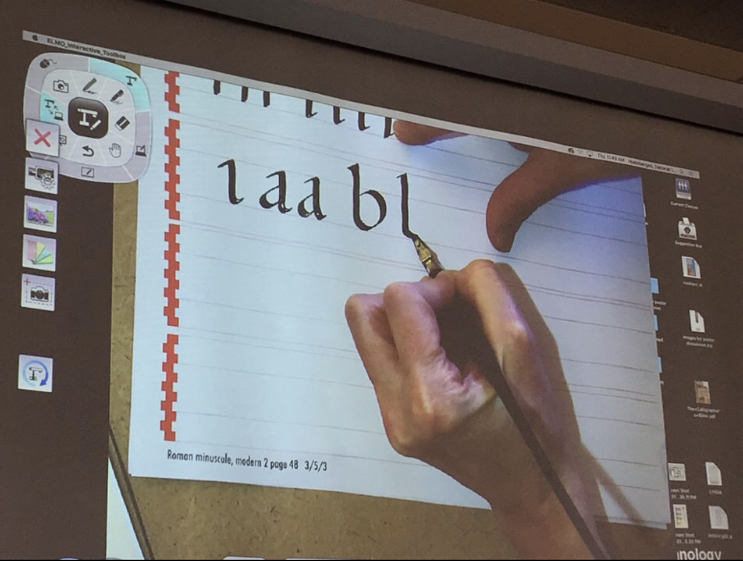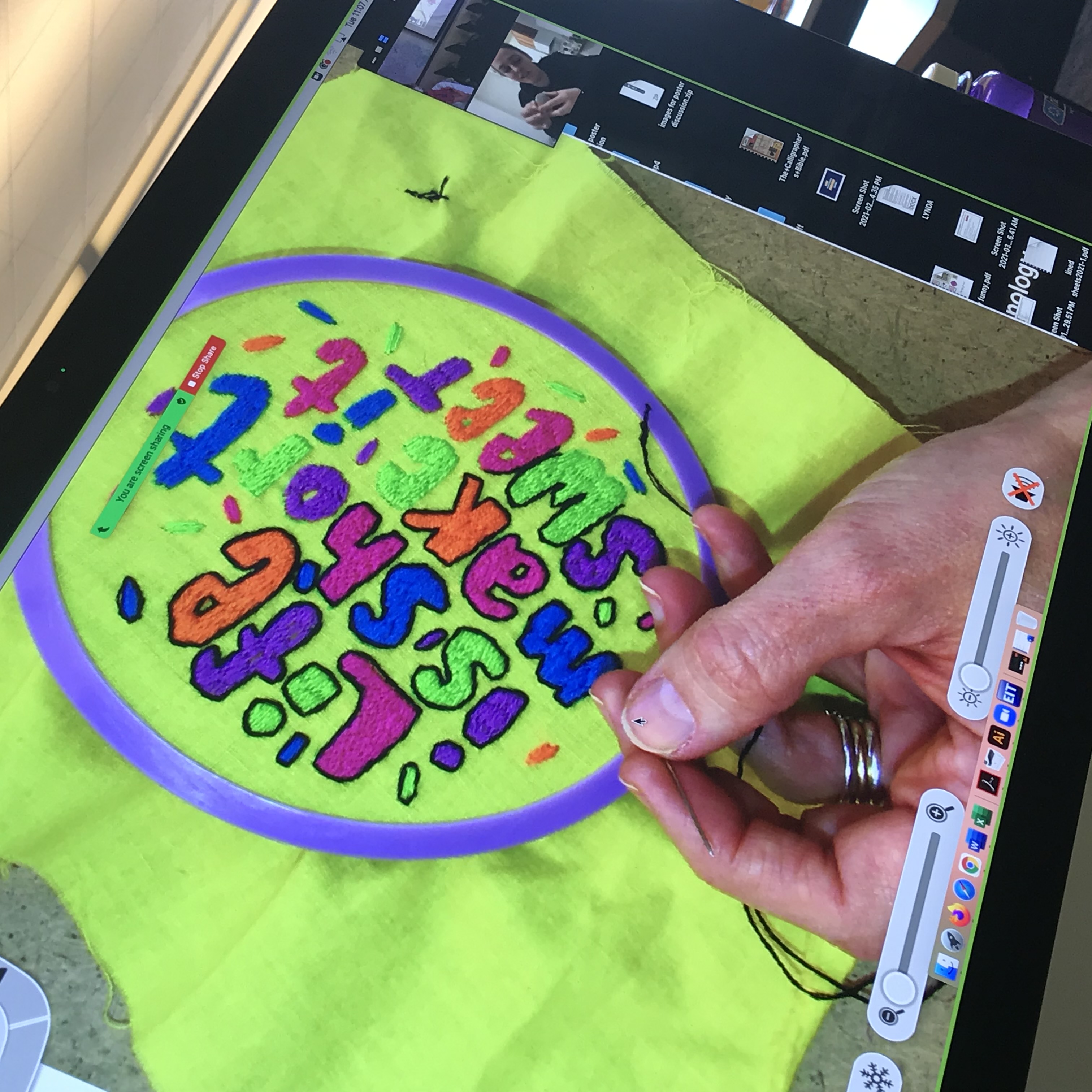ON THE BRIGHT SIDE … HOW THE MOVE TO ONLINE TEACHING CHANGED MY TEACHING FOREVER
Curator's Distinguished Teaching Professor – Graphic Design, School of Visual Studies, University of Missouri, Columbia, Missouri, 65211, USA, E-mail: Huelsbergend@missouri.edu
In this paper, I recount a short story about how I overcame my fear of online teaching by diving in head first. This piece looks at three areas where major changes occurred in my teaching during the move online: communication, organization, and the use of class time. It discusses how these major curricular changes put into effect just for online teaching have forever changed the way I teach and interact with my students, which indeed turned out to be a bright side to the stress of the move to online teaching.
KEY WORDS: online teaching, art, graphic design
In the spring of 2020 we got an email informing us that we had three days to move all of our classes online since the entire university was going remote. I had never used Canvas, never taught online, and never wanted to. My reaction was swift: “NOOO! Move my studio classes online?! Are you kidding me? I NEED to have the students IN THE ROOM!!!” Four days later I was teaching online and scared to death.
I teach students from freshmen to seniors, both art/graphic design majors and non-majors. At the time of the shift, I was teaching Design Methods and Production, Calligraphy/Hand Lettering, Graphic Design for non-majors and an Honor's Tutorial on drawing mandalas. All of these courses involved in-person studio classes with no online components. The shift was dramatic.
On the bright side, some of the huge, scary changes I was forced to make have made my classes better, my students' projects stronger, and their experience more meaningful. The move to online teaching, and then to a hybrid format, forced me to make very significant changes in three main areas of my teaching: communication, organization, and the use of class time.
When we moved to online teaching, I immediately set up a course through GroupMe (a free group messaging app) for all of my classes. I now cannot imagine teaching a class without this tool. GroupMe allowed me to send messages quickly to an entire class. In addition, I could also use it as a motivational tool and a means to stay connected, which was extremely important for my students during the pandemic. I believe this tool is not for everyone; however, it is a unique way to connect and communicate with students who live in the texting world. The use of the chat feature in Zoom was a game changer. People who would never speak up in class were communicating, asking questions, and actively participating by using the chat feature. I feel giving students the ability to speak or type impacts the dynamics of a class in a very positive way.
My fear of the online format forced me to prepare everything I would need for the whole semester and have it all loaded in Canvas before the semester started. By everything, I mean everything: every video, lecture, assignment, discussion, handout, rubric, and examples—all prepared in advance. Examples I would normally do on the fly in person needed to be filmed, captioned, and posted. Demonstrations such as basic calligraphic lettering skills (Figure 1) needed an Elmo camera to film. I used the same camera while teaching for demonstrations that needed to be done synchronously, such as with embroidery in my Calligraphy/Hand Lettering course (Figure 2). This was very difficult, but I realized early on how much better this was for my mental health. This allowed me more time to focus on student feedback and comments, which had a positive impact on their experiences.

FIG. 1: Demonstration of basic calligraphic lettering skills

FIG. 2: Demonstration of embroidery in the Calligraphy/Hand Lettering course
In my classes, we critique by sitting around a huge table and talking through projects. This was the most frightening thing to me because I just could not fathom recreating this experience online. However, after our first Zoom critique I quickly found out that we could do this, and we could do it well. Instead of setting projects out and going around the room to critique them, we were able to recreate that intimate atmosphere easily on Zoom. Students would take turns screen sharing and presenting projects while others typed comments in the chat or shared links and ideas or simply turned on their mics to discuss. This format focused the students more than I ever imagined possible. The critiques were faster and more productive because with chat, many could participate at once and students could save the chat to keep all of the comments. Students were more relaxed and comfortable, and their final projects were better than ever. Even now as I teach face-to-face, we still use Zoom for critiques at the beginning of every project.
One big takeaway that I had this semester after talking to alumni in the design field is that the ways designers are working and collaborating is changing. In our senior capstone class (Fall 2021), we spoke extensively with alumni who are practicing designers all over the country spanning a wide variety of positions. They all commented on how the pandemic and the work from home environment have permanently changed their work lives. I believe that more research can be done on how design professionals have changed their work habits and how we can work those ideas into the way we are teaching both online and in-person design classes. Designers are thriving in this work from home, digital environment and we need to learn from this. By the spring semester in 2022, we were instructed to move back to 100% in-person teaching. While I am dutifully following directions I am also planning and researching ways to move our program forward with more online and hybrid teaching. I do not believe there is a one size fits all approach to teaching graphic design online. Much like teaching in person, each program, professor, and class has specific needs and dynamics, and I believe to truly teach design successfully online those needs and dynamics must be taken into account. Each course needs to be adaptable, flexible, and fluid enough to be able to change in ways that meet the needs of the students and projects—much like we do when teaching in person. I do not have a concrete plan on how this can be done because I am so very new at this, but I do have a concrete plan that involves learning more about the best practices of teaching graphic design online.
This is my 25th year of teaching and I know for a fact that the past 15 months or so have taught me more about myself as a person, parent, and teacher than any other time in my life. Upon reflection, I realize that while I thrive on interaction with students, I was able to have those interactions and connections in the online environment. Creating an environment where the students felt structured, heard, comfortable, and challenged took everything I had in me, but I feel I was successful. My advice to anyone starting the online journey is to focus on those things. Make the students feel like they are heard and that their voices and opinions matter. Make the online environment structured enough such that things work smoothly, including having the entire class lesson prepared and ready before class starts. Make things interactive and fun for both you and the students. Know you will make mistakes but do not let that slow you down; learn from your mistakes and move on.
After the fall semester in 2020 when I was teaching hybrid classes (in which students would alternate every other day between in-person and online instruction) my teaching evaluations reflected that positive environment. My students encouraged me to keep parts of the online aspect in the course, no matter what, since they felt it helped them with their organization and aided in their success in the class. I am happy to have had a bright side to this stressful situation. I am now, proudly, a certified online teacher and hope to continue teaching online.
Comments
Show All Comments